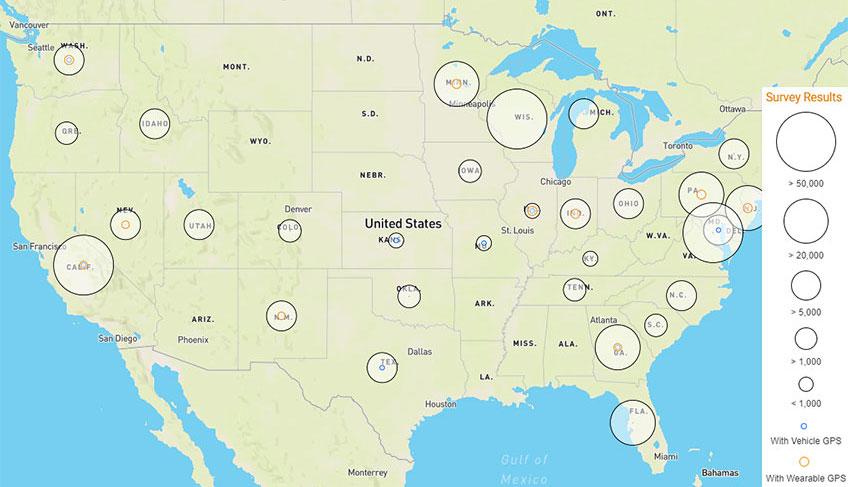Transportation Secure Data Center Turns 10, Sees Dramatic Growth
Providing Detailed Mobility Data for Research Applications Since 2010

This year marks the 10th anniversary of the Transportation Secure Data Center (TSDC), a national resource providing free online access to a veritable treasure trove of detailed travel behavior data applicable for a host of research applications.
About the TSDC
Transportation departments and metropolitan planning organizations regularly collect travel survey data to understand travel trends and update travel-demand forecasting models to identify critical transportation infrastructure needs. Such surveys often include high-resolution geospatial data valuable to researchers. Despite the hefty costs associated with collecting survey data, agencies are generally unwilling to share the detailed data with researchers due to privacy concerns.
The National Renewable Energy Laboratory (NREL) launched the TSDC in 2010 in partnership with the U.S. Department of Transportation and the U.S. Department of Energy to provide free access to data from travel surveys and studies while also preserving the privacy of individual participants. Cleansed data with sensitive information suppressed are readily available for download from the website. Detailed spatial data are accessible to approved users via a restricted and secure virtual connection.

The TSDC includes about 150 data sets from travel surveys and studies conducted across the nation. Image from Mapbox
Housed at NREL, the TSDC features detailed data from travel surveys and studies conducted across the nation, covering millions of miles of travel from personal vehicles and other transportation modes such as transit, biking, and walking. NREL screens the initial data for quality control, translates each data set into a consistent format, and interprets the data for spatial analysis. The TSDC features more than 700 million data points, including second-by-second global positioning system (GPS) readings, vehicle characteristics, and demographics. Plus, NREL processing routines add information on vehicle fuel economy and road grades and join data points to the road network.
Enabling Research
"The data-driven insights made possible by the TSDC support a wide variety of research activities—travel demand modeling, congestion mitigation research, emissions modeling, vehicle energy and power analysis, alternative fuel station planning, transit planning, evacuation planning, and more," said Jeff Gonder, who spearheaded the TSDC's development in 2010 and today manages the Mobility, Behavior, and Advanced Powertrains group in NREL's Center for Integrated Mobility Sciences. "During the past decade, the TSDC has enabled more than 180 research projects and related publications drawing on its robust data."
"In the past year, the TSDC saw a major spike in data with the addition of 76 data sets from the Metropolitan Travel Survey Archive, which includes travel studies dating back to the mid-1960s," Gonder added. "Other recent additions include data sets from several National Household Travel Survey add-on studies. The influx of these data sets expands TSDC coverage into new states and cities, allowing researchers to evaluate mobility patterns across a wider variety of geographic areas and in some instances across time to study how travel in different regions has evolved."
Looking Ahead
"The TSDC and its guiding principles of providing secure access to sensitive travel behavior information stand poised to intersect the world of location-based-services data in which massive behavioral data harvested from GPS-enabled smart phone and vehicle data systems require sophisticated and powerful data analytics—not only to pursue research, but to protect people's privacy and information," said NREL's Venu Garikapati, a transportation data project leader who oversees TSDC operations.
Going forward, NREL anticipates expanding TSDC data archiving to include transit data, more GPS travel surveys, data from currently underrepresented geographic areas, and other sensitive or detailed data of value to mobility researchers. The TSDC will also extend its coordination with the Livewire Data Platform, which provides U.S. Department of Energy researchers with access to additional types of data, such as connected and automated vehicle and freight transportation data.
Learn more about NREL's transportation and mobility research and integrated data and analysis tools.
Last Updated May 28, 2025
